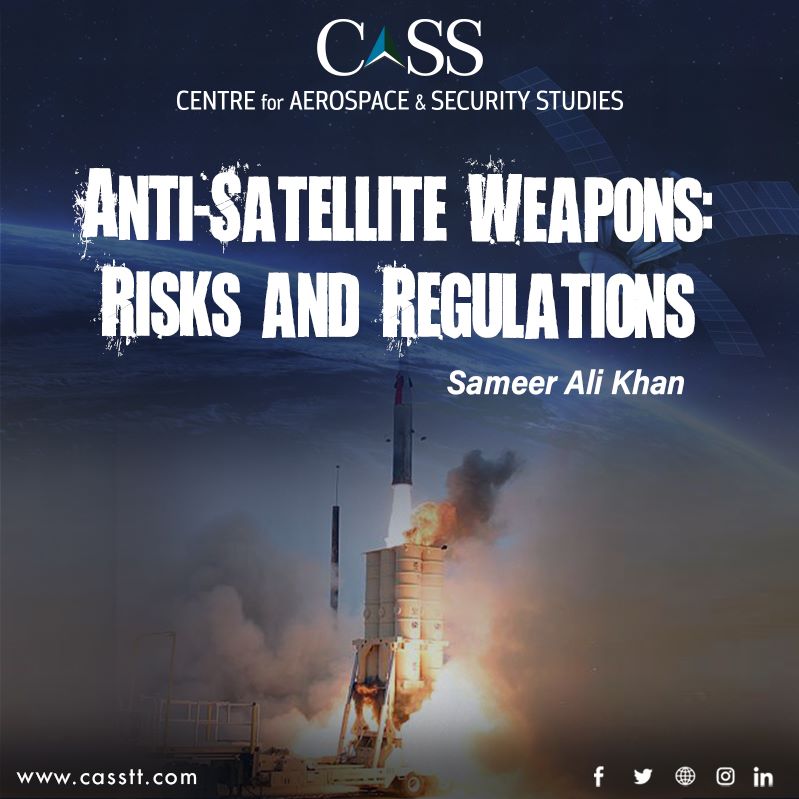Today, outer space is characterised as an increasingly congested, contested, and competitive domain. This is because of an unprecedented increase in satellites and actors operating them. 13 countries now possess the capability to launch satellites compared to only two in the late 50s. In 1959, there were only two man-made objects in outer space but as of 30th April, 2022, Union of Concerned Scientists’ database included 5,465 active satellites. The number stood at 3,372 on 31 December 2020 – indicating an increase of 62%.
The growing dependence over space-based assets for day-to-day activities, like communication, navigation, and weather forecasts etc. indicates that the numbers are likely to grow exponentially. The environment that these satellites face is not benign by any standard. The biggest threat emerges in the form of space debris which are any human-made objects in orbit around the Earth that no longer serve any useful purpose. 60 years of human activities in outer space have generated over 29,000 human-made objects of larger than 10cm, while even a 1cm object can collide with a satellite to cause damage comparable to a hand grenade. While some of the debris generation is inevitable, Destructive Anti Satellite Weapons (DA-ASATs) testing has been a leading source of debris creation – something that can be prevented.
DA-ASATs, part of the counterspace capabilities which help a state in establishing space superiority while denying the same to its adversary, are essentially missiles which either directly hit a satellite in outer space or destroy it through proximity detonations. Use of this capability generates debris in outer space and threatens sustainable utilisation of outer space for peaceful endeavours. Other non-kinetic counterspace capabilities include physical non-kinetic capabilities like lasers and High Power Microwaves (HPMs) that damage on board circuitry of satellites, electronic counterspace capabilities which affect the satellites’ communications channels and cyber capabilities which target the data.
In November 2022, the United Nations General Assembly (UNGA) passed a non-binding resolution banning testing of DA-ASATs. The resolution was supported by an overwhelming majority of 154 states. The resolution was tabled by the United States (US) that had already announced a unilateral moratorium on such testing in April of that year. While the earliest demonstrations of such a capability date back to early Cold War, only four states have demonstrated this capability so far – the US, Russia, China, and India. While Russia and China voted against the resolution, India abstained from voting but expressed its preference for a legally binding treaty over self-declared moratoriums. Russia and China, on the other hand, objected to the resolution’s shortcomings over development of such a capability and lack of disarmament when it comes to states that already possess this capability. The two have also pointed out how the issue of non-kinetic ASATs was left out.
While the effort to mitigate debris-generation through banning the testing of DA-ASATs is praiseworthy, leaving out the continued possession, production, and development of DA-ASATs and more advanced non-kinetic capabilities is worrisome. In a way, the emerging trend of unilateral moratoriums and UNGA resolution is akin to establishing DA-ASAT ‘haves’ and ‘have nots’ as was the case of nuclear non-proliferation regime. A taboo on testing of these technologies is likely to emerge, making it difficult for other states to enter this club. Such an outcome would be desirable if the intent was to avoid an arms race in outer space and move towards disarmament of existing capabilities. However, that does not seem to be the case.
France, for instance, joined the US in announcing a moratorium on testing of DA-ASATs – in a way surrendering its option to demonstrate this capability. However, in 2019, French Defence Minister had publicised a French plan to develop anti-satellite laser weapons stating that, ‘If our [French] satellites are threatened, we intend to blind those of our adversaries.’ Lasers and other non-kinetic means present a different set of challenges for space security. Possession of such capabilities is difficult to verify, it is difficult to establish attribution once such weapons have been employed, and their non-destructive nature lowers the threshold of use. In case of electronic and counterspace capabilities, the barriers to entry are lower and the risks of proliferation are higher. If other states with significant stakes in outer space emulate the French approach, it is only going to increase the likelihood of warfighting in outer space.
The emerging taboo on non-testing of DA-ASATs is not shared by three of the four states which have demonstrated this capability so far. Notwithstanding the American divergences with Russia and China, there is merit in the position that the latter have taken. The next step, therefore, needs to be disarmament of existing DA-ASAT capabilities and a ban on their development. Alongside, the issue of non-kinetic counterspace capabilities also needs to be addressed. Without a comprehensive approach towards space security and addressing the concerns of all stakeholders, there is no way to ensure that contestation in outer space will not escalate to undesirable levels.
Sameer Ali Khan is a Senior Research Associate at the Centre for Aerospace & Security Studies (CASS), Islamabad, Pakistan. He can be reached at cass.thinkers@casstt.com.




